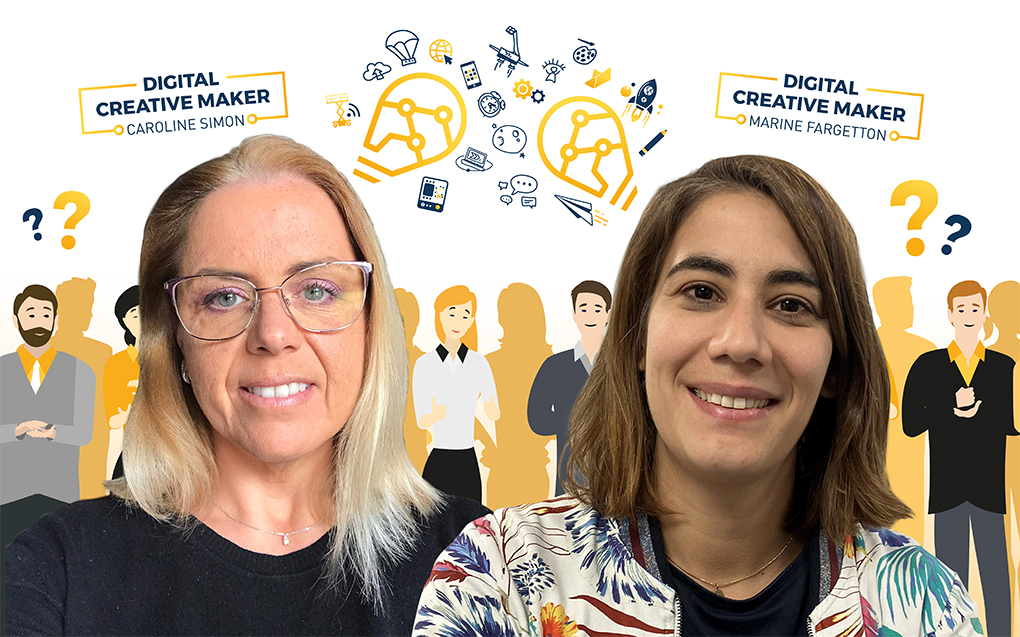Blockchain is not just about creating secure currencies like Bitcoin. This digital technology, which guarantees the transparency and inviolability of data exchanges, opens a new era for industrialists and service companies. Flavien Chervet, lecturer, specialist in new technologies and innovation director at the IRIIG school, and Edouard Pogu, blockchain business developer at iExec, share their thoughts on how blockchain could transform today’s business models.
How does the blockchain technology work?
Flavien Chervet: « The blockchain is a new system for processing and storing digital data. Instead of having a centralized database stored on a single server, the data is distributed in linked blocks (hence the name Blockchain) on several computers used by the same people accessing the database daily.
Less energy-consuming systems are emerging today, but traditionally the data registration in the blockchain is conditioned to the provision of a large amount of computing power to enable security. The security mechanism is a huge mathematical puzzle to be solved in order to write in the blockchain. This is what we call « proof of work » which is the basis of the mining. This structure allows the inviolability of data and its transparency, which allows applications in many fields.”
What does the blockchain enable?
Flavien Chervet: « By being transparent and unhackable, the blockchain removes third parties. It is automated and it relies on externalized trust, a decentralized, unfalsifiable and transparent database that allows secure transactions without intermediaries. To me, ownership is the most interesting part of the blockchain.
NFTs are one of the possible applications. It is a digital object with a unique signature registered in the blockchain. It can be a text, an image, a tweet. The combination of the digital object and its signature forms an NFT, a « non-fungible token ». This gives uniqueness to a digital object, to certify that it is not a copy.”
What are the possible uses of the blockchain, especially in the industrial sector?
Flavien Chervet: « One of the most obvious use today is product traceability. For car or aerial platform manufacturers with many levels of suppliers, traceability is complex because each participant has its own information system. With the blockchain, every stakeholder gets to register information on their components and manufacturing steps in the same data chain. We have visibility on each part. At the end of the chain, we get an identity card of the finished product. And then, we will have all the information on its use, its maintenance, and potential defaults. Calculating the carbon footprint of a product would also be an option by collecting the data provided by each user. As a consumer, I get reliable and complete information. »
Edouard Pogu: « The car industry is already working on blockchain. We are seeing NFTs paired with vehicles. This makes it possible to obtain a digital representation of each car, a sort of logbook with construction data. In case of problem, it is possible to identify the faulty part or component, then the manufacturer can inform the user.
Since on-chain data is unforgeable and its history cannot be changed, the blockchain, via the NFT, makes it possible to establish trust between the various players. The manufacturer gets transparency from his suppliers and in turn, brings transparency to his customers. As a manufacturer of aerial work platforms, for example, I can certify the geographical origin of parts and components. But the use of blockchain in the industry will depend on the degree of automation of the supply chain.
The machines and robots that assemble the platforms, for example, will transmit data to the blockchain and associate these data with the identity card of the platforms being assembled. This requires everyone to be involved, in other words, a communicating assembly chain. »
How do you see business models evolving thanks to the blockchain?
Edouard Pogu: « One of the business models that are emerging thanks to the blockchain is data rental. Today each of our actions and interactions on the Internet generates data. But this data does not belong to us: it is mainly owned by digital giants (Google, Apple, Facebook, Amazon, Microsoft – GAFAM).
With an Internet that relies on a decentralized infrastructure such as a blockchain, called Web3, my data are encrypted, and I am the only one owning the decrypting code. I own my data, and no one can use it without my consent. In the future, we can imagine that I would be able to share these data with third parties, but in exchange for a reward. »

What applications can we foresee for this secure data sharing?
Flavien Chervet: « Sharing data is now a real economic and industrial issue. If we use Haulotte’s example, the company would be able to rent some of its data to its customers, such as equipment rental companies or distributors, so that they can better understand the machines and conduct studies. On another beneficial perspective, rental companies would share data linked to machines usage with Haulotte, so that Haulotte has visibility on the end market to improve and adapt its machines to their users’ needs. But the relevance of this data rental and therefore its remuneration will depend on both parties’ needs. Do they need these data or only a part of it? The further we go into digitalization; the more machines will communicate and the more data we will have. Data exchange will then become key for improvement and market opportunities. »
Edouard Pogu: « Monetizing data is an important matter. But right now, in the industrial sector, most of the data are raw and haven’t been analyzed, so it’s still hard to use and monetize them. It will take a team of data scientists to refine these data, extract its value and transform it into usable and monetizable information. This will be one of the next steps. »
What are the limits of the blockchain?
Flavien Chervet: « The main limit is environmental. The mechanism and the mining are energy-consuming. Sometimes, it takes entire buildings of computers to create value on the blockchain. However, I will say that for the moment, it’s only a question of lack of maturity, but not a lack of potential. New security systems are now coming to maturity like Proof of Stake. »
And what about Haulotte?
For several months now, all internal services have been approached by the E-lab (Haulotte Group’s digital innovation department).
During ideation workshops, the E-lab community investigated possible case studies and determined whether the use of blockchain could integrate current or future processes. Thanks to this brainstorming, a potential application was selected and is currently being studied.


Caroline SIMON – Risk Manager – and Marine FARGETTON – Digital Expert – are part of the study group and shed light on the project:
« The use of blockchain is not an end in itself, but the aim is to provide a new level of service that doesn’t exist yet to our customers. Without disclosing its purpose, we can already say that this application will offer new guarantees to users. We are making sure that this innovation has a high level of security, reducing the risk of cyber-attack, and is aligned with GDPR rules.
Haulotte doesn’t want to miss an opportunity to grow and innovate with blockchain applications. We are evaluating several hypotheses and confronting them with our business model. As this technology evolves very quickly, almost at the same time as our tests, we must remain agile and faithful to our brand! »

